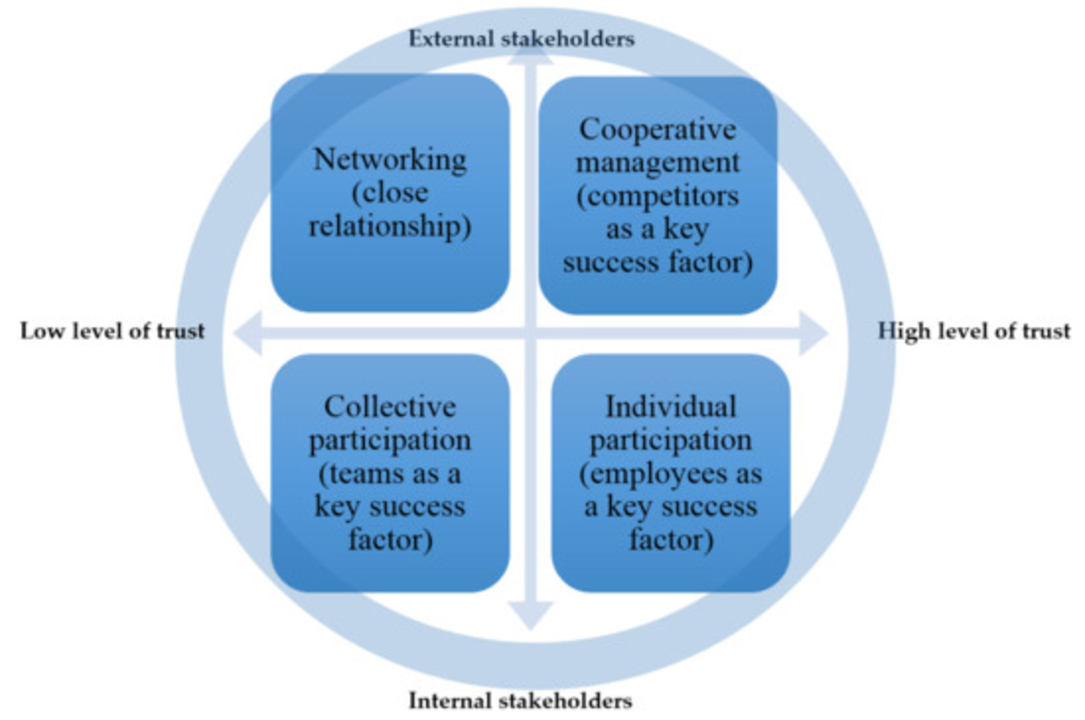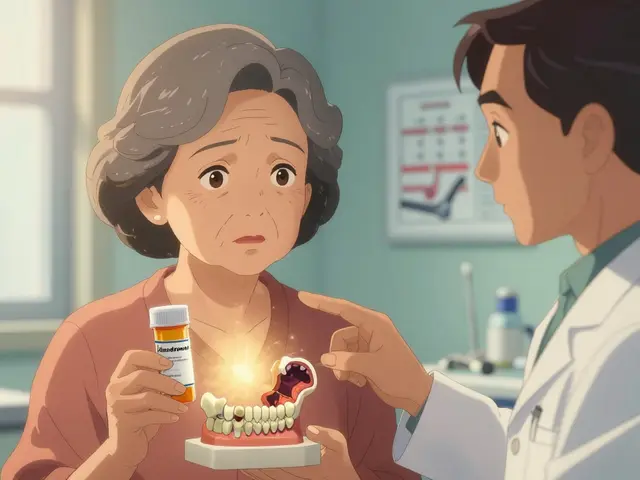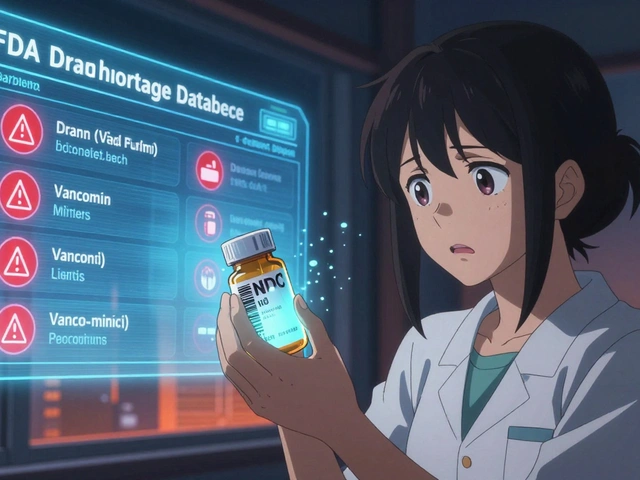Understanding Acromegaly and Its Impact on Patients
Acromegaly is a rare, chronic condition caused by an overproduction of growth hormone in the body, typically due to a benign pituitary tumor. This hormonal imbalance can lead to a variety of symptoms, including abnormal growth of the hands, feet, and facial features, as well as systemic complications such as diabetes, hypertension, and cardiovascular disease. Living with acromegaly can be challenging, as the condition often requires lifelong management and can significantly impact a patient's quality of life.
Recognizing the Need for a Multidisciplinary Approach
In order to effectively treat acromegaly and improve patients' overall well-being, a multidisciplinary approach is crucial. This means that various healthcare professionals, including endocrinologists, neurosurgeons, radiation oncologists, and nurses, must collaborate and communicate effectively to address the multiple aspects of the condition. By working together, these experts can develop a comprehensive treatment plan tailored to each patient's unique needs, ensuring the best possible outcomes.
Benefits of a Multidisciplinary Team
There are numerous advantages to adopting a multidisciplinary approach to acromegaly treatment. First and foremost, it allows for a more accurate diagnosis and assessment of the patient's condition, as each specialist can contribute their unique expertise and knowledge. Additionally, this collaborative approach ensures that all potential treatment options are considered and that the chosen plan is both safe and effective. Furthermore, a multidisciplinary team can provide valuable emotional support and education to patients and their families, helping them to better understand and cope with the challenges of living with acromegaly.
The Role of Endocrinologists
Endocrinologists play a critical role in the diagnosis and management of acromegaly, as they specialize in hormone-related disorders. They are responsible for evaluating the patient's hormonal status, monitoring the efficacy of medications, and managing any hormone-related side effects. Moreover, endocrinologists help to coordinate the overall treatment plan and collaborate with other specialists to ensure that the patient's needs are met in a holistic manner.
Neurosurgical Interventions
Neurosurgery is often the first line of treatment for acromegaly, as the primary cause of the condition is usually a pituitary tumor. Neurosurgeons are responsible for the surgical removal of these tumors, which can help to normalize growth hormone levels and alleviate symptoms. Advances in neurosurgical techniques, such as minimally invasive approaches and intraoperative imaging, have greatly improved the safety and effectiveness of these procedures, making them an essential component of the multidisciplinary approach to acromegaly treatment.
Radiation Oncology: A Critical Component of Treatment
In some cases, patients with acromegaly may require radiation therapy to control tumor growth or to treat residual tumor tissue following surgery. Radiation oncologists specialize in the delivery of targeted radiation treatments and play a vital role in the overall treatment plan. By working closely with the rest of the multidisciplinary team, radiation oncologists can help to ensure that patients receive the most appropriate and effective therapy for their specific situation.
Nursing Support and Patient Education
Nurses play an invaluable role in the multidisciplinary approach to acromegaly treatment, providing essential support and education to patients and their families. They help to coordinate care, communicate with various healthcare providers, and monitor the patient's response to treatment. Furthermore, nurses can offer valuable emotional support and guidance to patients, helping them to navigate the often complex and overwhelming process of managing their condition.
Putting It All Together: The Importance of Collaboration
Ultimately, the success of a multidisciplinary approach to acromegaly treatment hinges on effective collaboration and communication among all members of the healthcare team. By working together, these professionals can develop a comprehensive understanding of the patient's needs and create a tailored treatment plan that addresses the various components of the condition. Through this coordinated effort, patients with acromegaly can receive the best possible care and support, ultimately improving their quality of life and long-term outcomes.





Bret Toadabush
May 6, 2023 AT 06:59They’re hiding the cure for acromegaly behind layers of government lies.
Diane Thurman
May 14, 2023 AT 23:19The whole multidisciplinary thing sounds good on paper, but most patients end up lost in a maze of appointments-maybe they should just stick to one doc.
Iris Joy
May 23, 2023 AT 15:39Great overview! As someone who’s helped a few patients navigate endocrinology and neurosurgery, I can say that clear communication between teams makes a massive difference.
Encourage patients to keep a symptom diary and bring it to every appointment; it helps the whole crew see the big picture.
Sarah Riley
June 1, 2023 AT 07:59From a systems‑theory perspective, the integration of hormonal feedback loops with neurosurgical outcomes creates a complex adaptive network that demands cross‑disciplinary epistemology.
Tammy Sinz
June 10, 2023 AT 00:19Let’s be clear: the only way to truly optimize acromegaly care is to synchronize endocrine monitoring with real‑time imaging data-otherwise we’re just treating fragments, not the patient.
Christa Wilson
June 18, 2023 AT 16:39Love seeing all the specialists working together! 🌟 It gives hope that patients will finally get the comprehensive care they deserve. 😊
John Connolly
June 27, 2023 AT 08:59I’d like to expand on the role of the endocrinologist in this collaborative model. First, consistent GH and IGF‑1 monitoring provides the quantitative backbone for treatment decisions. Second, endocrinologists serve as the central hub for patient education, explaining the nuances of medication titration and potential side effects. Third, they coordinate with neurosurgeons to assess postoperative hormonal recovery, ensuring that any residual hypersecretion is promptly addressed. Fourth, when radiation therapy is indicated, the endocrinologist monitors for delayed hypopituitarism, a complication that can surface years later. Fifth, the nurse specialist, often under the endocrinology umbrella, offers day‑to‑day support, reinforcing adherence and lifestyle modifications. Sixth, multidisciplinary tumor boards, which include radiologists, pathologists, and surgeons, rely on the endocrinologist’s data to align therapeutic goals. Seventh, the psychosocial aspect cannot be overlooked; endocrinologists should liaise with mental‑health professionals to manage the emotional burden of chronic disease. Eighth, advances in long‑acting GH antagonists are reshaping the therapeutic landscape, and endocrinologists are pivotal in integrating these agents safely. Ninth, personalized medicine approaches, such as pharmacogenomics, are emerging, and endocrinologists are positioned to interpret genetic data to predict drug response. Finally, clear, jargon‑free communication with patients fosters trust, which is essential for long‑term compliance. In summary, the endocrinologist is not just a lab‑test interpreter but a linchpin that holds the entire multidisciplinary effort together, ensuring that every aspect of acromegaly management is cohesive and patient‑centered.
Sajeev Menon
July 6, 2023 AT 01:19From an inclusive standpoint, it’s vital to remember that not all patients have equal access to top‑tier centers. Tele‑medicine follow‑ups can help bridge that gap, allowing endocrinologists to adjust therapy without the patient traveling far.
Emma Parker
July 14, 2023 AT 17:39Hey, love the teamwork vibe! Btw, I think it’d be cool if the nurses also got a say in the medication schedule – they see the day‑to‑day struggles.
Joe Waldron
July 23, 2023 AT 09:59Absolutely, the multidisciplinary approach is the gold standard-, especially when you consider the cascade of metabolic effects, the cardiovascular risk profile, and the psychosocial dimensions, all of which intertwine and demand a coordinated response.
Wade Grindle
August 1, 2023 AT 02:19Interesting read. It’s good to see the field moving toward more holistic care.
Benedict Posadas
August 9, 2023 AT 18:39Totally agree! Multidisciplinary teams are the way forward 😊 Let's keep the momentum going! 💪
Jai Reed
August 18, 2023 AT 10:59We must ensure that every patient receives the same level of care, no matter where they live. Simple steps like standardized protocols can make a big difference.
Sameer Khan
August 27, 2023 AT 03:19When discussing the integration of multiple specialties in acromegaly management, one must first acknowledge the underlying pathophysiological complexity. The excess growth hormone originates from a somatotroph adenoma, which exerts both endocrine and paracrine effects on peripheral tissues. Consequently, the disease manifests across a spectrum of organ systems, necessitating input from endocrinology, neurosurgery, radiation oncology, and nursing. Each discipline contributes unique expertise: endocrinologists quantify hormonal excess, neurosurgeons excise the adenoma, radiation oncologists mitigate residual tumor burden, and nurses provide longitudinal patient education. Moreover, the decision‑making process hinges upon a shared data repository that includes biochemical assays, magnetic resonance imaging, and patient‑reported outcomes. This repository must be updated in near real‑time to allow dynamic treatment adaptation. For example, postoperative GH normalization guides the need for adjunctive radiotherapy, while persistent hyperglycemia may prompt endocrinologists to adjust antidiabetic regimens. The interdisciplinary tumor board serves as a crucible where evidence‑based guidelines are reconciled with individual patient preferences. In practice, coordinated clinic visits-often termed “one‑stop” appointments-reduce patient fatigue and improve adherence to follow‑up schedules. Furthermore, multidisciplinary care models have been shown to reduce morbidity, as early detection of treatment complications, such as hypopituitarism or cranial nerve deficits, enables timely intervention. From a health‑economics perspective, consolidating expertise reduces redundant testing and shortens hospital stays, thereby optimizing resource utilization. Finally, the psychosocial dimension cannot be overstated; patients benefit from a cohesive support network that validates their experience and mitigates the isolation often associated with chronic disease. In sum, the multidisciplinary approach is not merely advantageous-it is indispensable for achieving optimal clinical outcomes in acromegaly.
WILLIS jotrin
September 4, 2023 AT 19:39Well said, Sameer. It really ties the whole picture together.
Kiara Gerardino
September 13, 2023 AT 11:59Only elites truly grasp the moral imperative behind comprehensive care-mediocrity won’t cut it.
Tim Blümel
September 22, 2023 AT 04:19Exactly, Kiara! Every patient deserves that top‑tier attention, and the data backs it up. 🌱💡
Joanne Ponnappa
September 30, 2023 AT 20:39Thanks for the thorough discussion! It’s encouraging to see such collaboration across borders. 👍
Michael Vandiver
October 9, 2023 AT 12:59Great points all around! Let’s keep sharing insights and support each other’s efforts. 🎉